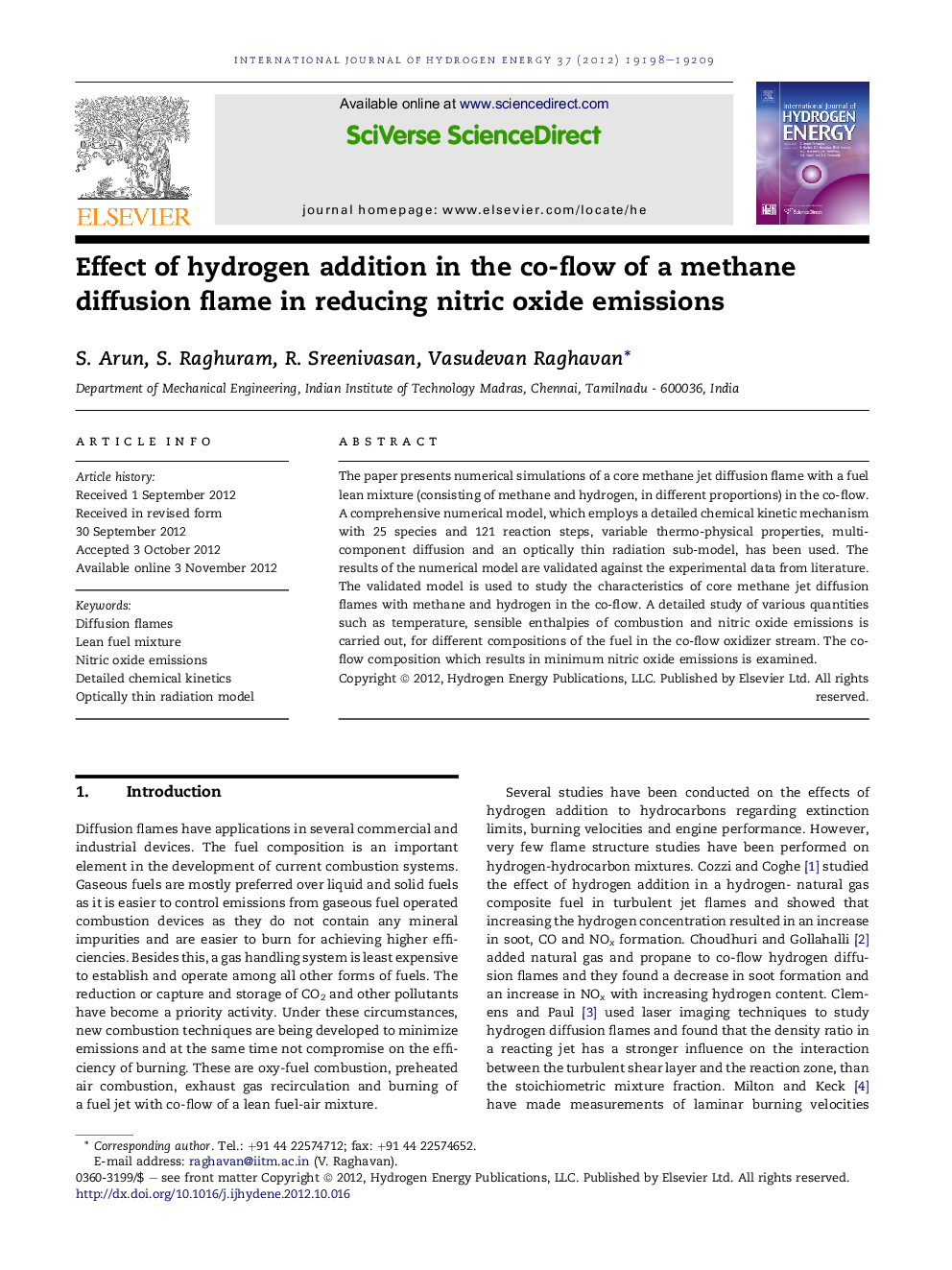| Article ID | Journal | Published Year | Pages | File Type |
|---|---|---|---|---|
| 1276128 | International Journal of Hydrogen Energy | 2012 | 12 Pages |
The paper presents numerical simulations of a core methane jet diffusion flame with a fuel lean mixture (consisting of methane and hydrogen, in different proportions) in the co-flow. A comprehensive numerical model, which employs a detailed chemical kinetic mechanism with 25 species and 121 reaction steps, variable thermo-physical properties, multi-component diffusion and an optically thin radiation sub-model, has been used. The results of the numerical model are validated against the experimental data from literature. The validated model is used to study the characteristics of core methane jet diffusion flames with methane and hydrogen in the co-flow. A detailed study of various quantities such as temperature, sensible enthalpies of combustion and nitric oxide emissions is carried out, for different compositions of the fuel in the co-flow oxidizer stream. The co-flow composition which results in minimum nitric oxide emissions is examined.
► Numerical investigation of the effect of H2 addition in the co-flow is presented. ► Results from numerical model are validated against experimental data from literature. ► Maximum temperature decreases with increase in percentage of hydrogen in the co-flow. ► The NO mass fraction contours follow the same pattern as the isotherms. ► When a lean mixture is used in the co-flow, NO production is found to be minimized.
